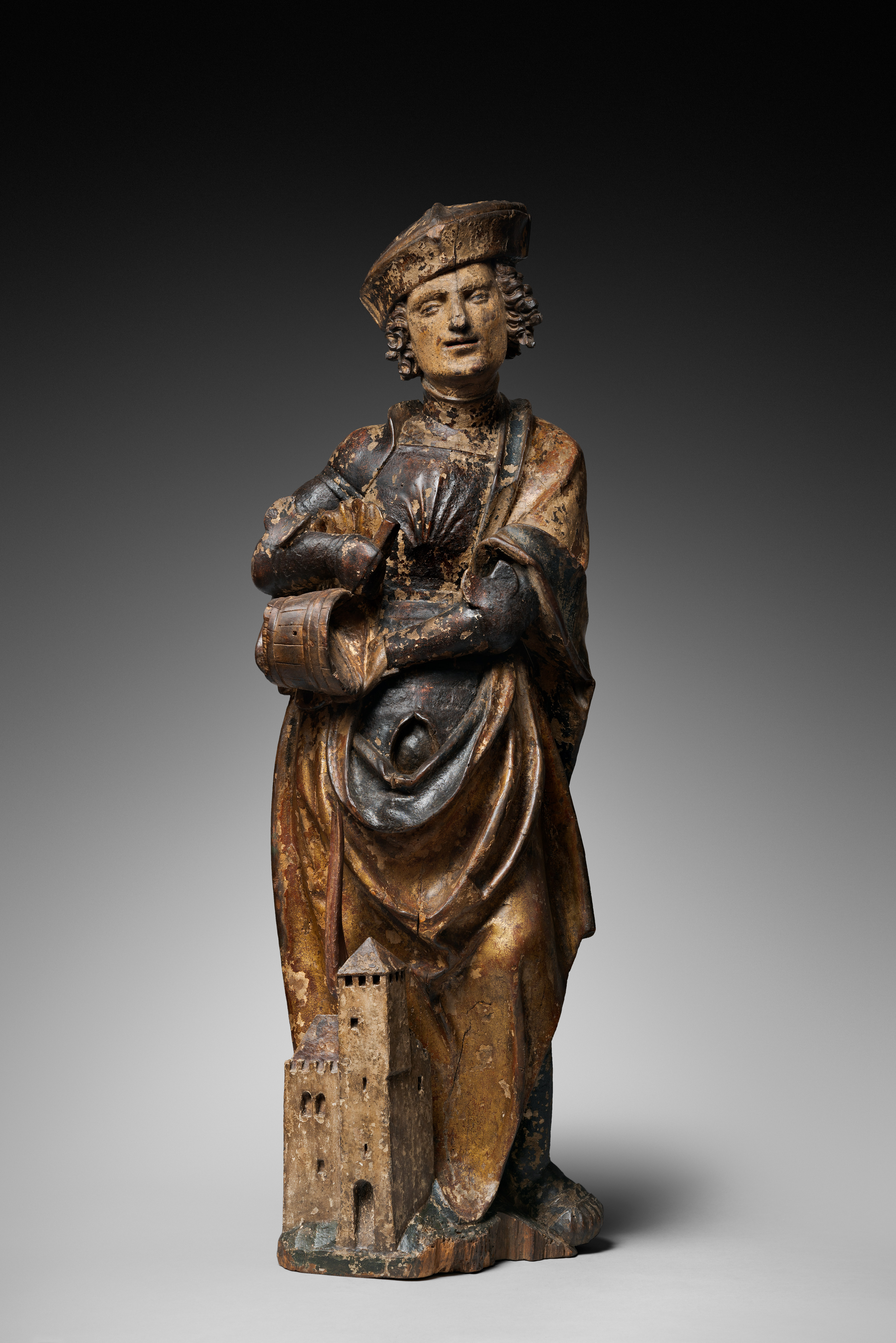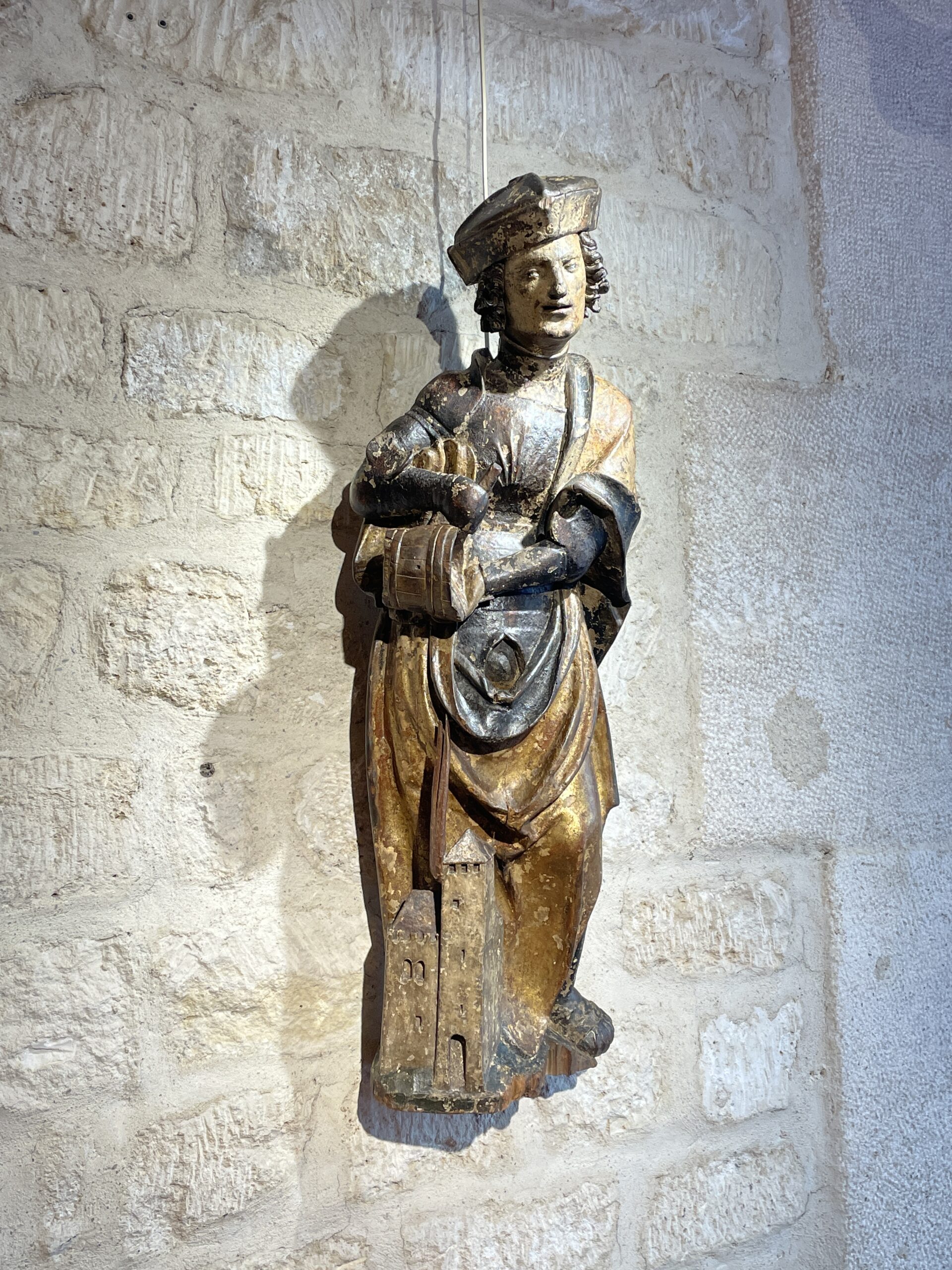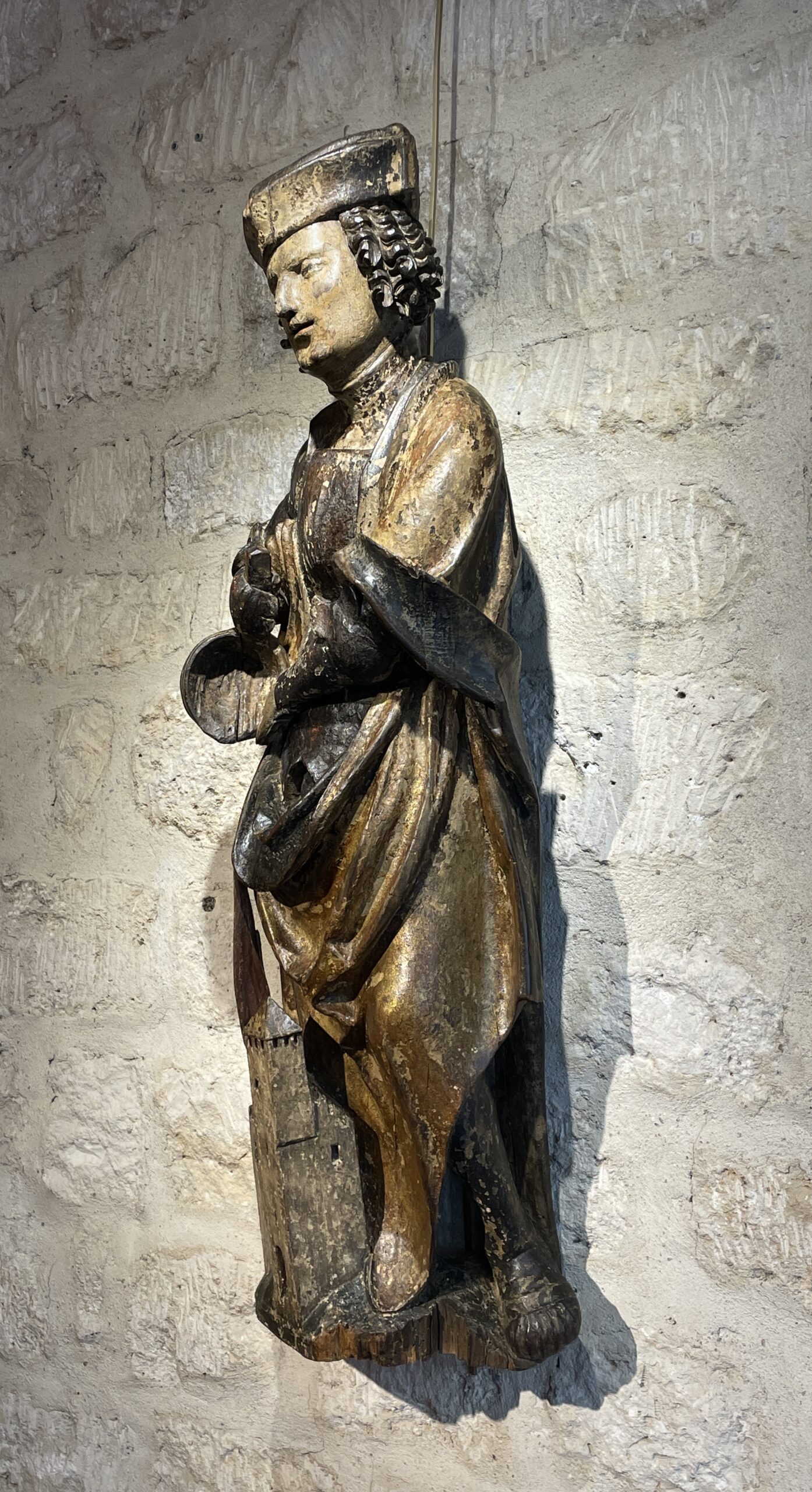Description
Since the Middle Ages, Saint Florian has been the object of an important popular cult in Austria, especially in the Tyrol, but also in Bavaria and Bohemia. A symbol of courage and determination, he was invoked to protect the souls of the living from sin and those of the dead from the torments of purgatory.
From the middle of the 15th century onwards, he protected against the dangers of water and fire. It was said that, as a young man, he had put out a church fire with a simple jug of water and saved a coalman from the flames who had fallen into a flaming millstone.
This evolution of the cult of Saint Florian was also noticeable in the arts. For a long time, he was represented as the conqueror of death, covered in his armour, with a sword in his fist, but from the middle of the 15th century, still wearing armour, he is watering a burning house with a jug or a bucket.
It is to this second iconographic type that this beautiful Florian saint belongs. With a relatively elongated barrel, it is fashioned from a monoxyl limewood log. Florian is depicted in a half round shape, the back being largely hollowed out. The beautiful original polychromy is particularly well preserved.
The legionary saint is standing and holding a bucket of water, with which he is pouring water over a fortified house that is being consumed by flames. The young saint’s beardless face is framed by curly hair. A small cap with a rolled-up brim covers his head.
Saint Florian’s face, with its fine and delicate features, is slightly tilted to the right. His two eyes, with half-closed lids, appear under the arch of the eyebrows, which are sketched with a simple black line with a well-defined curve. Slightly drooping, they seem to indicate a form of resignation or melancholy.
The Saint’s reserved face and inward expression are contrasted with the very elegant workmanship of the gilded cloak with green reverse. The cloak, which is placed on his shoulders, reveals the armour of Saint Florian, the breastplate of which can be seen. One side of the cloak on the front of his body forms deep, rounded folds.
On his feet, he is wearing bear’s paw shoes.
This sculpture is similar in iconography and style to the production of the South German workshops of the late 15th century
Indeed, from around 1475 to 1530, South German sculpture enjoyed great creativity, becoming a particularly dynamic centre of production. This art, often referred to as “late Gothic”, was characterised by the softness and reserved sensitivity of its figures, the importance of detail and the virtuoso work of drapery.
Production was dominated by wood carving. The lime tree distinguishes the production of this region. This soft, light wood gave the carver a great deal of freedom and allowed for a fine rendering and a beautiful polish. Usually carved from a single block of wood, the sculpture is worked horizontally, placed on a large lathe so that the carver can turn it as he wishes. Certain more complex or difficult to access elements were worked separately before being assembled to the sculpture, which was probably the case for the bucket of our Saint Florian, the heart of the log in order to preserve the sculpture from cracks that could appear during the drying of the wood. This also made it possible to reduce the volume and total weight of the sculpture.
As the sculpture of the Florian saint illustrates, polychromy was of primary importance and was never neglected. The use of gilding, typical of the late Middle Ages, contributes to the richness of these sculptures. The polychromy gives Saint Florian a tangible reality thanks to the rendering of the materials while recalling his sacred character, through the preciousness of the materials and the brilliance of the gold.
The details of the costume are characteristic of the realism of the artists of this region in the last decades of the 15th century, bearing the imprint of the art of Hans Multscher, who worked in Ulm between the years 1430-1467. His flourishing workshop made a lasting impression on the generations that followed him throughout Swabia.
Thus, this Saint Florian appears to be a very fine work from a South German workshop, late 15th century.
Hagiography of Saint Florian
According to the account of the Passion of Saint Florian, he was martyred in the year 304. This year was marked by the persecution of soldiers who had embraced the Christian faith by the Roman emperor Diocletian.
On hearing of the imprisonment of forty Christians in Lauriacum (Lorch, Austria), Saint Florian, a former Roman legionary, went before the prefect Aquilinus. Not giving in to the violence or anger of the latter, Saint Florian did not deny his faith and refused to sacrifice to the gods. Aquilinus then ordered that he be thrown into the waters of the Enns with a millstone around his neck. Some time later, the mortal remains of the poor Saint washed up on the rocks. It was watched over by an eagle before a pious widow named Valerie secretly gave it a more dignified burial.
An Augustinian monastery was built on the presumed site of his grave in 1071 – today in the town of Sankt Florian, 13 km from Linz – and has been rebuilt several times over the centuries. In the crypt of the abbey church a stone millstone is preserved, which is said to have been used for the martyrdom of St Florian. A pilgrimage soon developed here.
The dispersal of the saint’s relics to Italy and Poland (of which he is a patron saint) enabled his cult to spread beyond Austria. However, it was in Austria and southern Germany that it was most prevalent.
He was the first Austrian martyr and the first Austrian saint to be canonised.
Bibliographie
Claude Lapaire, Sculpture sur bois du Moyen-âge, Genève : Musée d’art et d’histoire, 1986
Coll., Sculpture allemande de la fin du Moyen-âge dans les collections publiques françaises : 1400-1530, Musée du Louvre, 1991
Michael Baxandall, South German Sculpture, 1480-1530, Victoria and Albert Museum, 1974
Sophie Guillot de Suduiraut, Sculptures médiévales allemandes, conservation et restauration, La Documentation française, 1993
Sophie Guillot de Suduiraut, Dévotion et séduction, Sculptures souabes des musées de France vers 1460-1530, Somogy, 2015








